
Basic Information
Author: Fan Beilu
Publisher: Ocean Press
Publication Year: 2024
Number of Pages: 360
Price: 680
Binding: Hardcover (large 12-page)
ISBN:978-7-5210-1267-5
About the Author
Sun Lijun: pen name Fan Beilu, second-level professor and doctoral supervisor at Beijing Film Academy, director of China Film Association, director of China Artists Association, initiator of the concept of “improvisational film”. Since 2014, he has completed six improvisational film projects as chief director and chief planner, including “18 Years Old, 18 Days”, “Let’s Go Together”, “Crazy Marathon”, “150 Hours”, “Let’s Go, Let’s Go and See”, and “The Place Closest to the Sky”. As an animation director, his representative works include animated feature films “Little Soldier Zhang Ga”, “Happy Running”, “Legend of Rabbit Hero”, etc.; animated short films “Autumn Fruit”, “Beginning of Autumn”, “New Three Crossroads”, “The Last Stage”, “Earth Cannon”, etc.; as a contemporary artist, he has published painting collections “Fan Beilu·Jianghu”, “Fan Beilu·Human Heart”, “Ink Traces”, “Ink Images”, “Ink Path”, etc.

The author is Sun Lijun, pen name Fan Beilu
Book Introduction
From the invention of printing to the widespread popularization of “paperless” digital painting, to the emergence and widespread application of generative artificial intelligence painting, the art of painting has been constantly transforming and developing in terms of creative methods, forms of expression, visual language, media application and even ontology. At the same time, it has also exposed a series of related issues such as the deviation of aesthetic ideologies between the East and the West, the unemployment anxiety of artists and the definition of original standards. Based on the current technological and humanistic background, this book takes the lead in a pioneering and experimental way, by juxtaposing generative artificial intelligence ink painting with the “re-screen” of artist Fan Beilu’s original ink painting, to intuitively show what the advantages and limitations of the algorithm are when “replicating” and “reproducing” Chinese ink painting art. In this process, it highlights the dialectical and existential relationship between contemporary cutting-edge technology and national traditional aesthetics, and advocates “constructing the oriental aesthetics of the era of artificial intelligence with a transcendent philosophical attitude and pious life aesthetics.” In summary, this book combines experimental, technical, aesthetic and academic aspects. As the world’s first picture album completed by the “joint efforts” of artists and artificial intelligence, it is suitable for professional teachers and students in the fields of art, fine arts, audio-visual media research, etc. for teaching and research, and it is also suitable for readers who are interested in the current status and future development of generative artificial intelligence.
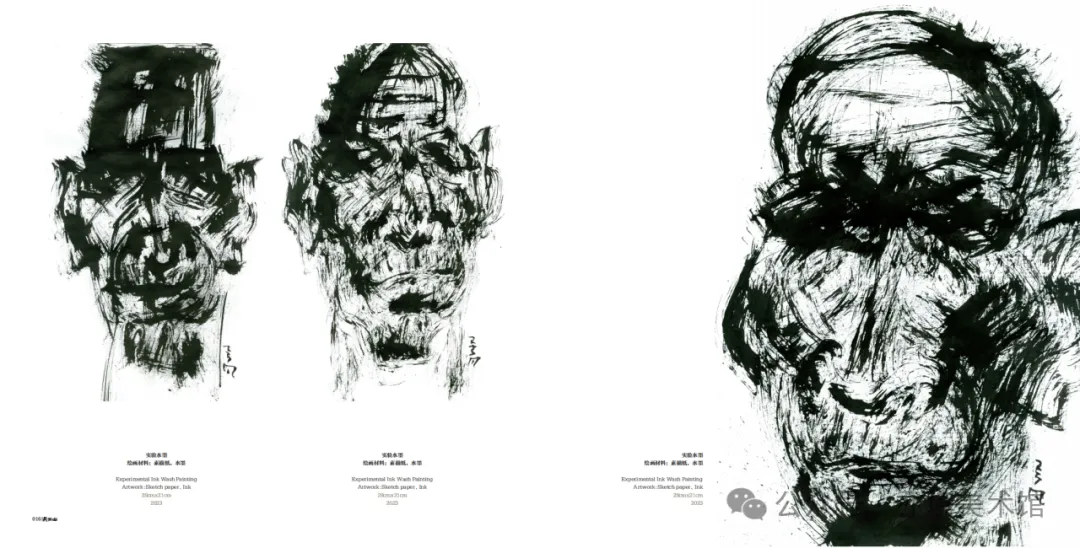
The book contains both black and white ink paintings on sketch paper.
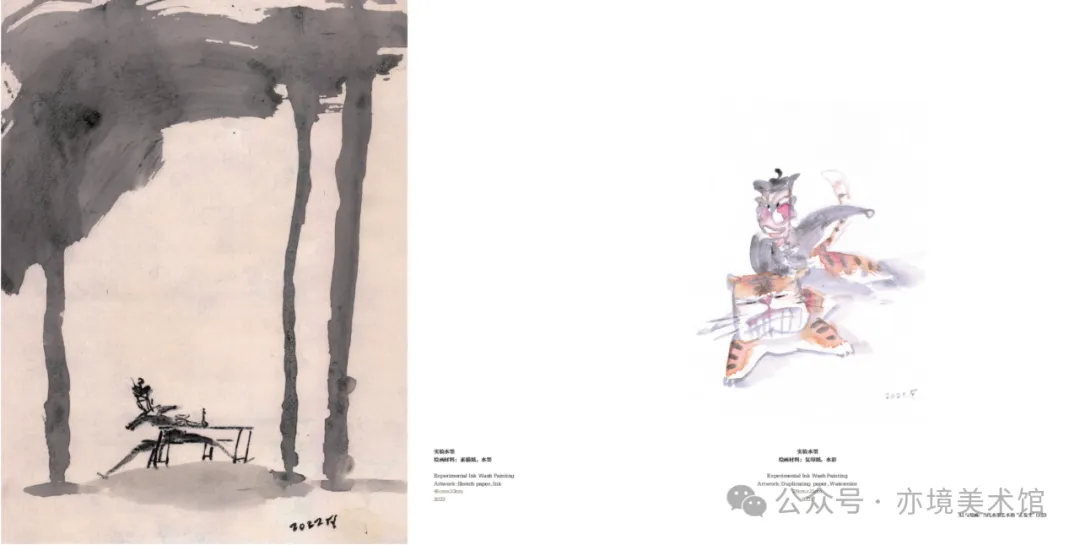
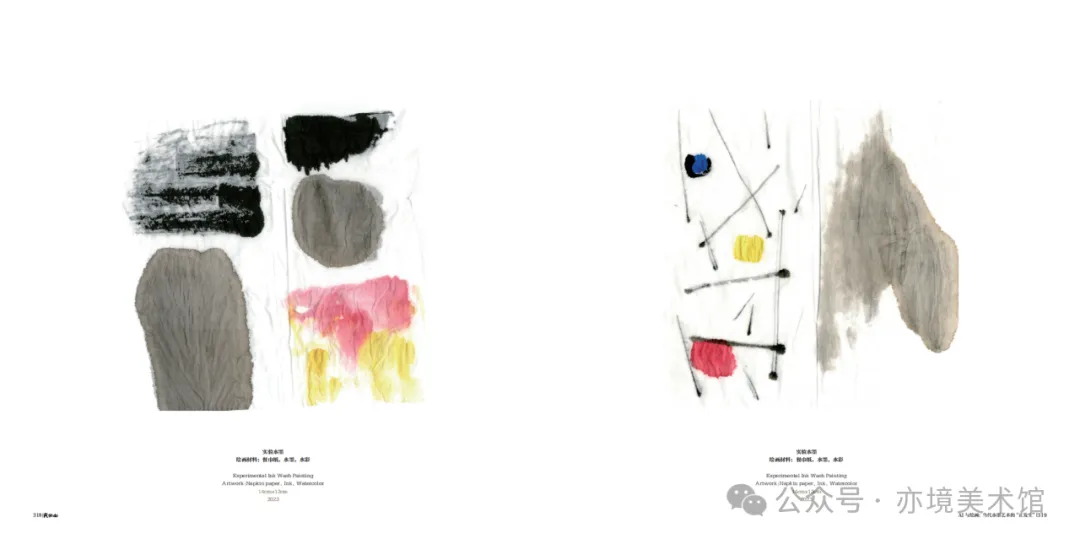
There is also a variety of experimental applications in materials and media.


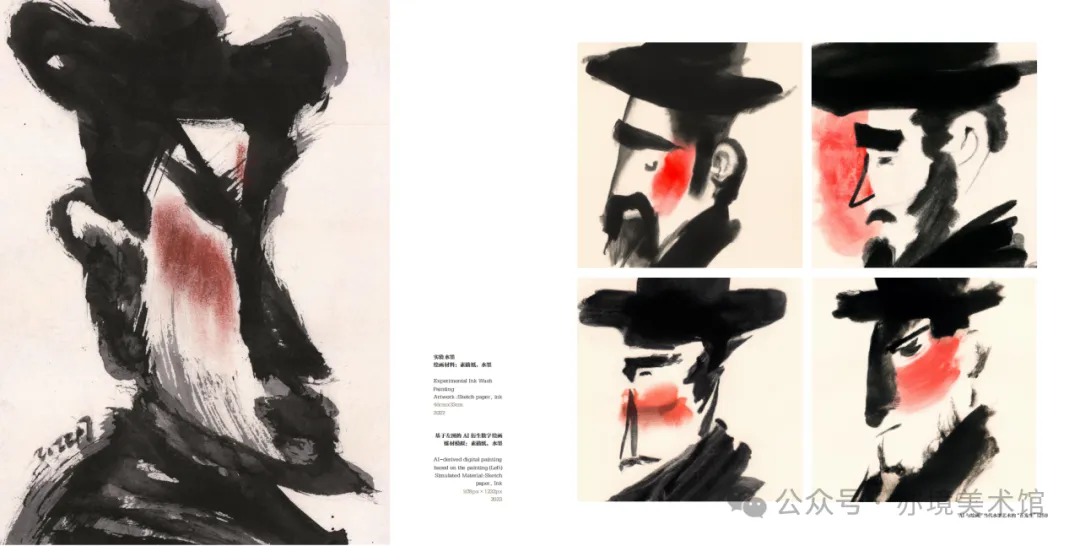
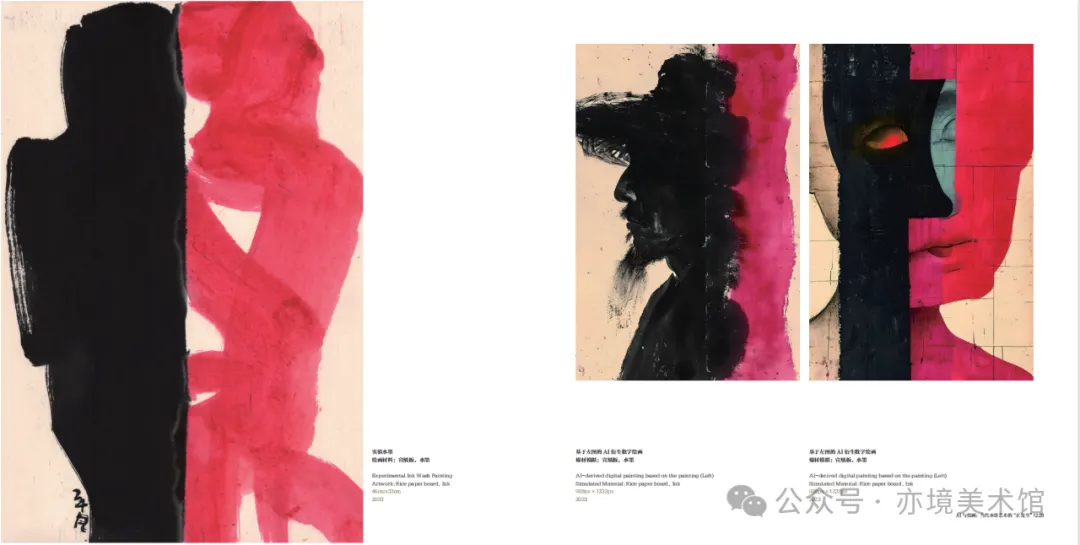
AI-generated paintings and hand-painted works “overlay”
The difference in the “creation” mechanism between the two is obvious on paper
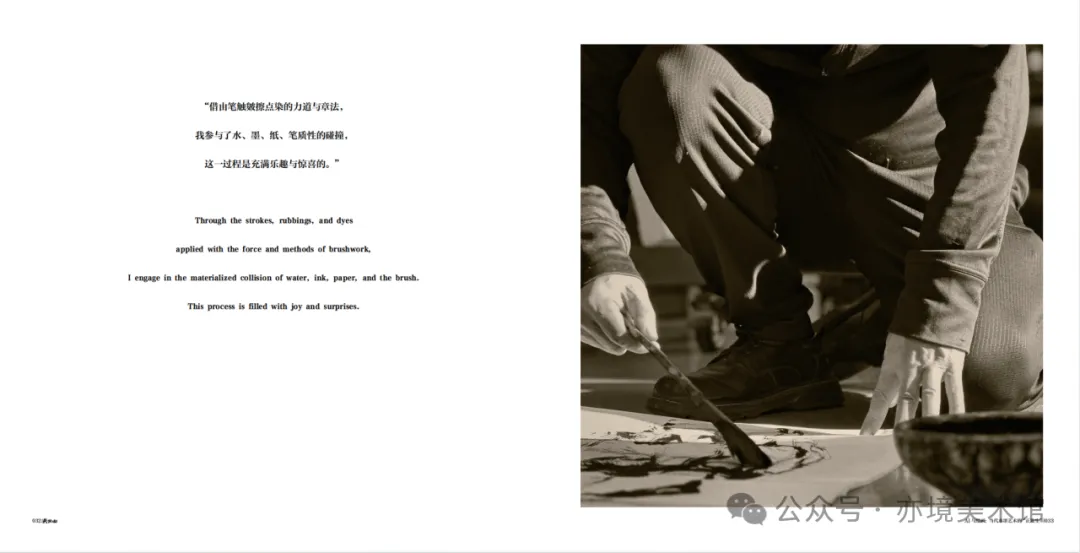
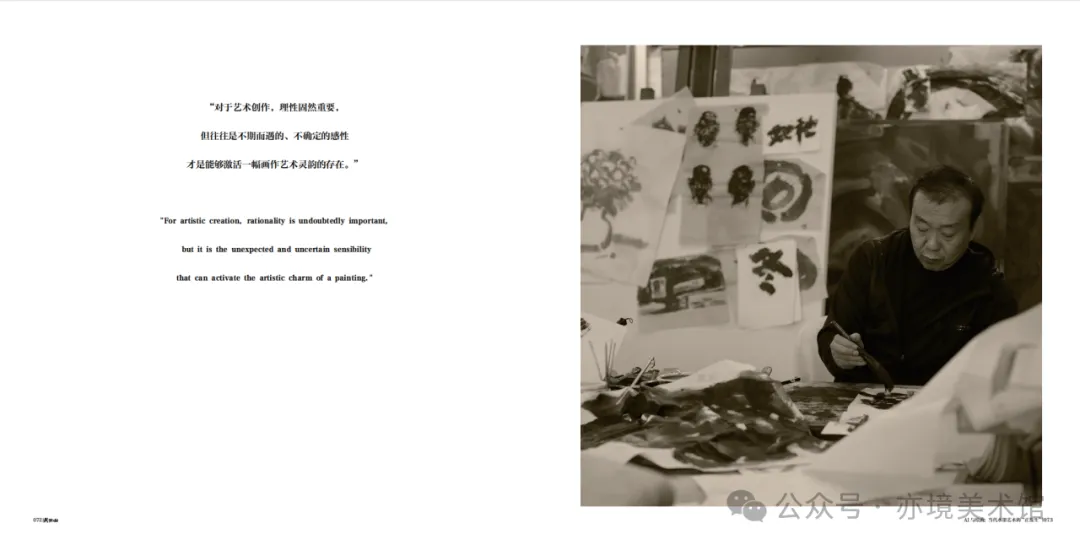
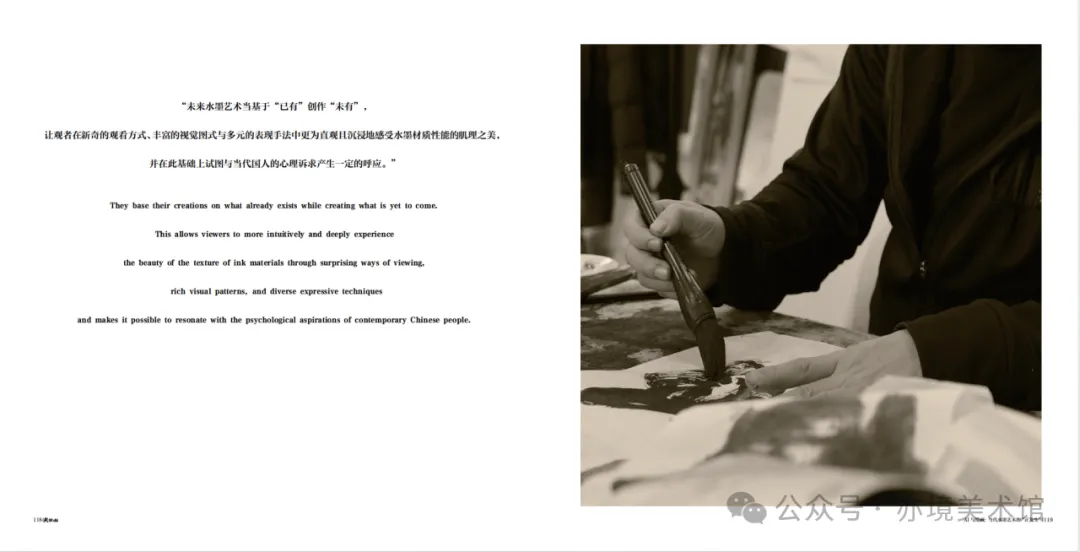
Real-time recording of the author’s creative process
Catalog Overview
P001 Introduction
“Rather than providing technical application manuals, I hope to inspire people to think about beauty.”
I wish to inspire fresh thoughts on ‘beauty’ rather than providing a technical manual.
P004 Chapter 1
Putting pen to paper: Understanding the materiality of traditional ink painting
“Brushstrokes: Understanding the Materiality of Traditional Ink Painting”
P090 Chapter 2
On-site: Witnessing the Unknown Diversity of Ink Painting
“On Scene: Witnessing the Unknown of Ink Art”
P176 Chapter 3:
Collision: The Generative Nature of Cognitive Artificial Intelligence Art
“Collision: Recognizing the Generative Quality of AI Art”
P262 Chapter 4:
Discovery: The Possibilities of Colliding Digital Painting Art
“Discovery: Exploring the Possibilities of Digital Painting Art and AI”
P348 Postscript
“Construct the Oriental Aesthetic
in the Era of Artificial Intelligence”
 2024 24th Beijing Film Academy Animation Academy Award Call for Submissions
2024 24th Beijing Film Academy Animation Academy Award Call for Submissions